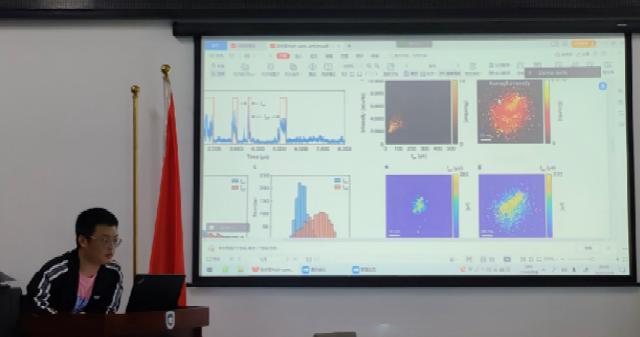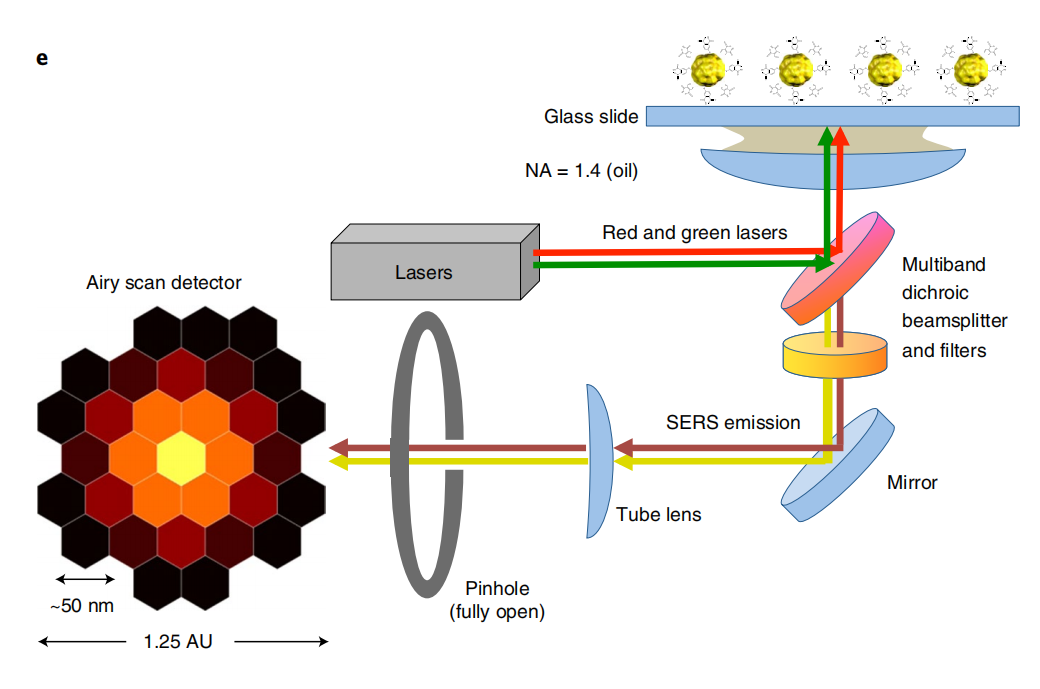
High-speed imaging of surface-enhanced Raman scattering fluctuations from individual nanoparticles
单个纳米粒子表面增强拉曼散射波动的高速成像
主讲人:张点奇
nature nanotechnology 丨Published:16 September 2019丨Issue Date:October 2019丨Pages:981–987 (2019)丨DOI: https://doi.org/10.1038/s41565-019-0535-6

Abstract:
The concept of plasmonic hotspots is central to the interpretation of the surface-enhanced Raman scattering (SERS) effect.Although plasmonic hotspots are generally portrayed as static features, single-molecule SERS (SM-SERS) is marked by characteristic time-dependent fluctuations in signal intensity. The origin of those fluctuations can be assigned to a variety of dynamic and complex processes, including molecular adsorption or desorption, surface diffusion, molecular reorientation and metal surface reconstruction. Since each of these mechanisms simultaneously contributes to a fluctuating SERS signal, probing their relative impact in SM-SERS remains an experimental challenge. Here, we introduce a super-resolution imaging technique with an acquisition rate of 800,000 frames per second to probe the spatial and temporal features of the SM-SERS fluctuations from single silver nanoshells. The technique has a spatial resolution of ~7 nm. The image reveal short ~10 µs scattering events localized in various regions on a single nanoparticle. Remarkably, even a fully functionalized nanoparticle was ‘dark’ more than 98% of the time. The sporadic SERS emission suggests a transient hotspot formation mechanism driven by a random reconstruction of the metallic surface, an effect that dominates over any plasmonic resonance of the particle itself. Our results provide the SERS community with a high-speed experimental approach to study the fast dynamic properties of SM-SERS hotspots in typical room-temperature experimental conditions, with possible implications in catalysis and sensing.
摘要:
等离子体热点的概念是解释表面增强拉曼散射( SERS )效应的核心。尽管等离子体热点通常被描绘成静态特征,但单分子SERS ( SM-SERS )具有信号强度随时间变化的特征。这些波动的来源可以归结为各种动态复杂的过程,包括分子吸附或脱附、表面扩散、分子重新取向和金属表面重构等。由于这些机制中的每一种都同时贡献一个波动的SERS信号,因此探究它们在SM - SERS中的相对影响仍然是一个实验挑战。这里,我们介绍了一种采集速率为每秒80万帧的超分辨成像技术,用于探测单个银纳米壳的SM - SERS涨落的时空特征。该技术具有~ 7 nm的空间分辨率。在图中,短约10 μ s的散射事件分布在单个纳米颗粒的不同区域。值得注意的是,即使是完全功能化的纳米颗粒,98 %以上的时间都是"黑暗"的。零星的SERS发射表明了由金属表面的随机重构驱动的瞬态热点形成机制,这种效应在粒子本身的任何等离子共振中占主导地位。我们的研究结果为SERS领域提供了一种高速的实验方法来研究典型室温实验条件下SM - SERS热点的快速动态特性,在催化和传感方面具有潜在的应用价值。

